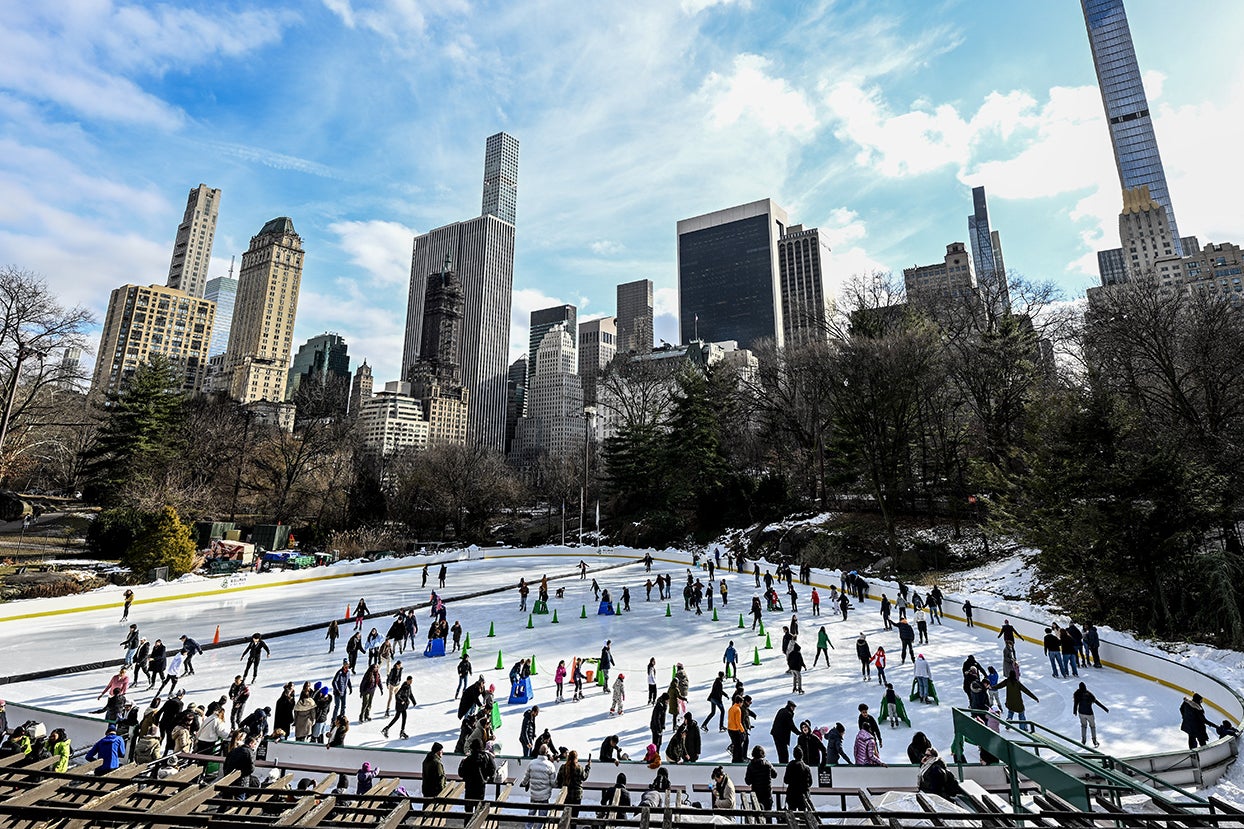Sign up for the Slatest to get the most insightful analysis, criticism, and advice out there, delivered to your inbox daily.
A city is seeking bids to operate a skating rink. It’s a premise as pedestrian as a Parks and Recreation episode, news that might not even garner a press release, let alone a newspaper story, in a normal city under normal circumstances.
This time, however, the city is New York, whose Mayor Eric Adams has just wriggled out of a federal indictment by striking an apparent deal with the president of the United States to deport the city’s immigrant residents.
Bidding for the rink? The president’s real estate company, the Trump Organization, which operated the rink from 1986 to 2021, before being stripped of the contract after the Jan. 6 riot. The company’s executive vice president says: “We ran it beautifully for decades and we plan on doing so again.”
The date of the city’s request for proposals? Nov. 13, eight days after Donald Trump’s victory in the presidential election. And even that might be business as usual, except that, as the local news watchdog the City revealed this month, New York City had just been offered a gift of $120 million from the nonprofit Central Park Conservancy to replace the rink and repair the surrounding infrastructure. The Parks Department turned down the offer in order to seek private sector bidders instead. Now, the City reports, the Trump Organization is “aggressively lobbying” Adams to get the rink back.
“Clearly the mayor is hoping to do a quid pro quo, or at least dangling that possibility,” a former high-level New York City official said to me. “It’s so dirty in every way it’s hard to believe they could get away with it. This is naked, blatant, Macy’s-window-at-high-noon corruption.”
When asked about this issue on March 17, Adams responded that reporters would have been scandalized had the city given the contract to the Conservancy in a “backroom deal.” But it would not have been unusual for New York’s Parks Department to accept the gift of nonprofit investment and stewardship in a “sole-source” deal before seeking bids.
The Central Park Conservancy is doing a similar rebuild of the park’s other skating rink, in Harlem. The Prospect Park Alliance runs Brooklyn’s beloved skating rink; other New York parks have their own nonprofit benefactors, a model that, whatever you think of it, emerged in the 1980s with the Bryant Park Corporation, a nonprofit business improvement district whose stewardship of the troubled park was copied by organizations that now supervise other NYC public spaces, including Union Square and Washington Square Park.
Some pols have expressed their doubts about the city’s choices. Manhattan Borough President Mark Levine and council member Shekar Krishnan wrote to Adams last month expressing “deep concern” about the procurement process, noting that the Conservancy’s dismissed proposal was “extremely exciting and compelling.” In any event, they urge: “The Trump name cannot be on Central Park.”
You might think the POTUS would have more important issues on his mind than who runs a frozen pond in Midtown. But Wollman Rink is a foundational piece of the Trump myth. In 1980, the beloved rink was closed for repairs. Six years and $13 million later, it was still unfinished, and the renovation had become a fiasco that seemed to epitomize Americans’ flagging faith that the government could do things right. Into the void stepped a young Donald Trump, who took a fee from the city to hire a contractor to complete the rink—accomplishing in six months what the city could not do in six years.
It was an important moment for Trump, a bit of self-promotion disguised as philanthropy that he wielded for years to mask a conspicuous lack of civic contributions, for a man of his means. He invoked the saga during the 2015 Iowa caucuses, as if a decades-old renovation of a skating rink might be relevant experience for the job at hand.
The triumph also marked his transition from just another real estate nepo baby to “a colossal tabloid celebrity who maintains, bombastically, that he can manage government better than any politician,” as David Freedlander put it in 2015.
For Marc Dunkelman, the author of Why Nothing Works: Who Killed Progress—and How to Bring It Back, the episode encapsulates both the forgone power of the Democratic city (much of NYC’s ineptitude stemmed from an anti-graft law that made it impossible to pick one contractor to manage the whole process) and the enduring appeal of Trump to his voters. “They do like this notion that he’s not going to allow someone to say, ‘These are the rules, and you can’t work past them,’ ” he told me.
In 2002, when the television producer Mark Burnett was seeking a mogul to star in his reality show, he invoked the rink’s savior story—at the rink—to butter up a watching Trump. Soon enough, Trump was on NBC’s The Apprentice, and the brash New York developer became a national television star.
Ironically, it was not Bill de Blasio who took Trump’s name off the rink, but the Trump Organization itself. In the fall of 2019, the Trump name vanished from both Central Park’s rinks. The speculation at the time was that the Trump name was so toxic—at the heart of deep-blue Manhattan—that it was causing the rinks to lose money.
But if there’s one thing more important to Donald Trump than making money, it’s getting revenge. He’ll need more than Eric Adams to get his rink back: Any winning bid would have to be approved by the city’s Franchise and Concession Review Committee. As Greg Smith notes for the City, “Getting clearance will require a city committee to overlook the company’s 2022 conviction on criminal tax fraud charges and a 2024 civil court ruling finding the organization had engaged in years of fraudulent activity.”
Technically, the winning bidder must have a “satisfactory record of business integrity.” There, the Trump Organization may be on thin ice.
















